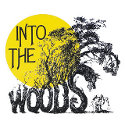Word Count
Writers Talk About Writing
How "Into the Woods" Reveals the Power of Revision

The film adaptation of the Stephen Sondheim musical Into The Woods just opened to much critical acclaim. Musical theater and film are very different, and revising and adapting one's work is a challenge, but what changes and how it changes can offer us insight into the art and the artist.
In the musical Into the Woods, Cinderella has run away from the Royal Ball for two nights and on the third night the Prince has spread tar on the stairs to prevent her from getting away again. In the original musical, Cinderella sings this song, On the Steps of the Palace, after the events have taken place and while in conversation with another character:
You think, what do you want?
You think, make a decision.
Why not stay and be caught?
You think, well, it's a thought,
What would be his response?
But then what if he knew
Who you were when you know
That you're not what he thinks
That he wants?
The movie version depicts the actual events that are only recounted in the musical, and the song traces Cinderella's thoughts at the very moment she is stuck on the sticky steps. This renders the "you" used above inappropriate, and brings the audience closer to Cinderella in the new lyrics:
Alright, what do you want?
Have to make a decision
Why not stay and be caught?
Should I give that a thought
What would be his response?
But then what if he knew
Who I am when I know
That I'm not what he thinks
That he wants?
The first few lines of the new lyrics have an immediacy the old ones lack. There is a clear sense that this is a "moment of truth" and something has to be decided.
It is not merely the case that a dropping the "you" form of address makes this complicated song now uncomplicated, however. In the old lyrics the repetition of "you think…" afforded an opportunity for the playful "you think, well it's a thought," an opportunity missing in this version. Instead, Sondheim makes it clear that even though we are with Cinderella at the time of her predicament, there are still a few levels of consciousness between us.
"Why not stay and get caught? / Should I give that a thought?" shows us a character not only thinking, but thinking about thinking. Cinderella is already thinking about staying behind, but she is also thinking about the appropriateness of thinking that thought. In the original musical lyrics, the character had already made up her mind, but the author here takes full advantage of the new immediacy to show us not just a decision but the very process of making a decision.
This idea, that in the present we watch Cinderella make a decision, is reinforced by the most extreme lyrical change in this song. The musical's lyric attributed Cinderella's decision to inspiration or luck, something which connects with the fact that in her mother's spirit lives in a tree and Cinderella can get birds to do things for her:
Then from out of the blue,
And without any guide,
You know what your decision is,
Which is not to decide.
You'll leave him a clue:
For example, a shoe.
And then see what he'll do.
The movie version of this moment of revelation cannot deal with the source of this inspiration in this way, because "out of the blue" is a usually a designation one makes about something only after it has happened. Whether we know the source of things as they happen or not, to be sure that it wasn't connected to anything that had gone before, is something we can only do in retrospect. The film's lyrical change takes us right back into Cinderella's mind:
Wait!
Though thinking it through
Things don't have to collide
I know what my decision is
Which is not to decide
Cinderella is again standing outside her thinking process here, and she comes to the decision on her own, as a consequence of what has gone before.
Sondheim has depicted a mind deciding on a course of action before, most strikingly in A Little Night Music (1973), where Fredrik, a lawyer, weighs the options he has in seducing his wife and lays it out clearly as a series of choices, A or B. Fredrik is clearly aware of consequences, as choices branch out into other choices:
Now, there are two ways of broaching it:
A, the suggestive,
And B, the direct.
Say that I settle on B, to wit,
A charmingly Lecherous mood,
A, I could put on my nightshirt or sit
Disarmingly, B, in the nude.
Fredrik is a much more organized thinker than Cinderella, but they both revise on the spot and react to the possibilities they are presented with when they play a thought through to the end. A character's mind as they come to a decision can be a claustrophobic place, but these characters embrace so many scenarios that their minds feel expansive, and this draws the audience into the process, much like the new immediacy of Cinderella's film lyrics.
Every writer faces the daunting task of revising their work. Sondheim's example here shows us how valuable a change in perspective can be in opening up new avenues to explore in a work that was thought to be finished several decades ago.


